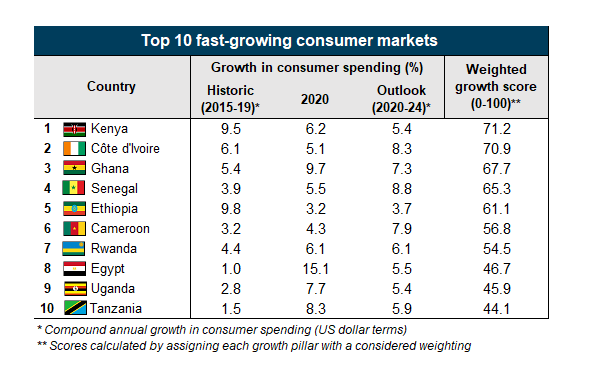As global tea culture continues to grow in popularity, ceramic tea sets, which symbolize elegance and sophistication, are gradually attracting more attention from consumers. However, in Africa, despite the deep roots of tea culture in several regions, the ceramic tea set market remains underdeveloped. This article explores why Africa is an untapped market for ceramic tea sets and analyzes the potential and strategies for tapping into the African market through both online and offline channels.
1. The Rise of Tea Culture in Africa
The Role of Tea in Africa
Tea has become a popular beverage deeply integrated into daily life across Africa. Different countries have their unique tea traditions:
- Kenya: As one of the world’s largest tea producers, Kenya’s tea culture is widespread, with black tea typically consumed, often with milk.
- Morocco: Moroccan mint tea is a national tradition, typically served in delicate glass cups or silverware, reflecting a unique tea culture.

- South Africa: South Africa’s Rooibos tea, caffeine-free, has gained international popularity in recent years, creating new opportunities for ceramic tea sets.

With Africa’s growing economy, an increasing number of consumers are beginning to focus on quality of life and home decor, boosting the demand for ceramic tea sets.
2. Africa’s Consumer Market: Enormous Potential
Population and Consumer Demographics
Africa is the fastest-growing population region globally, and it is expected that by 2030, the continent’s population will reach 1.7 billion. As the population becomes younger and the middle class rapidly expands, more and more consumers are beginning to seek high-quality home goods, such as ceramic tea sets.

| Key Indicator | Data | Impact on Ceramic Tea Set Market |
|---|---|---|
| Population Growth (2023) | 1.5 billion | Expands the consumer base, providing potential market demand |
| Middle Class Growth | Expected to double by 2030 | Increases demand for high-end tea sets among high-income consumers |
| Urbanization Rate | 3.5% growth annually (urban population will increase by 150 million by 2030) | Urbanization drives demand for modern home products |
Economic Drivers
Although Africa’s economy is unevenly developed, some countries are leading in growth. For instance, Nigeria, South Africa, Egypt, and Kenya all have relatively high GDP growth rates and are diversifying their economies. As income levels rise, more consumers are willing to pay for high-quality lifestyle products, providing a perfect market for ceramic tea sets.
E-commerce Growth
E-commerce platforms in Africa, such as Jumia and Konga, are growing rapidly, offering convenient channels for cross-border e-commerce. These platforms allow ceramic tea sets to directly reach African consumers, particularly the middle and high-income groups, for whom online shopping is becoming increasingly popular.
3. Market Demand for Ceramic Tea Sets
Demand for Luxury and Heritage
African cultures are rich in tradition, and tea culture is a key part of this. More consumers are seeking elegant, culturally rich, high-quality products, not just functional tea sets. The timeless appeal, durability, and variety of designs in ceramic tea sets make them an ideal luxury home item, particularly in urban markets across Africa.
Customization and Cultural Adaptation
African consumers have diverse aesthetic preferences when it comes to home decor. Therefore, offering customized ceramic tea sets has huge market potential. From West Africa to East and Southern Africa, ceramic tea sets could incorporate local cultural elements, such as vibrant geometric patterns or natural motifs, to better suit consumers’ tastes.
4. Challenges in Entering the African Market
Infrastructure and Distribution Challenges
Despite Africa’s market potential, infrastructure remains a challenge. In many regions, transport and logistics networks are still underdeveloped, leading to higher distribution costs. Manufacturers looking to enter the African market will need to partner with local distributors and logistics companies to ensure that their products reach consumers efficiently.
Price Sensitivity
Despite the growth of the middle class, many African consumers remain price-sensitive. To stand out in a competitive market, ceramic tea set brands will need to balance high quality with cost control. Manufacturers could consider launching mid-to-high-end product lines to cater to different consumer segments.
5. How to Access the African Market via Online and Offline Channels
Offline Retail Partnerships
- Partnerships with Local Supermarkets and Retailers
In Africa, major retail chains like Shoprite, Pick n Pay, and Woolworths have widespread market coverage. These retailers’ distribution networks are ideal for introducing ceramic tea sets to the market, particularly targeting middle-to-high-income consumers. Possible collaboration channels include in-store counters, limited-time promotions, and exclusive retail events. - Home Goods E-Commerce Platforms
African e-commerce platforms such as Jumia and Konga are rapidly growing and provide direct access to African consumers. Through these platforms, ceramic tea set brands can reach major cities in Africa and benefit from increased brand visibility.
Online KOL Collaboration
Collaborating with home décor KOLs (Key Opinion Leaders) on social media is a powerful way to influence younger consumers and high-end home enthusiasts. Here are some African home décor KOLs:

- The African Home (Instagram)
Focuses on showcasing a blend of modern and traditional African home styles, with a loyal fan base. - House of Emira (Instagram)
A high-end home décor influencer who shares refined home decoration and tea set pairing, ideal for promoting luxury tea sets. - Zanele Mdlalose (YouTube/Instagram)
A South African influencer who shares home DIY and decor tips, making her an ideal ambassador for promoting luxury homeware. - Mpho Letsholonyane (Instagram)
A modern home décor influencer, well-suited for targeting consumers interested in personalized and stylish ceramic tea sets. - Busi Vokwana (Instagram)
A lifestyle influencer focusing on home décor content, perfect for recommending ceramic tea sets to middle and high-end consumers.
By collaborating with these influencers, brands can engage with their target audience and increase their visibility in the African market.
E-Commerce Platforms and Targeted Marketing
Through social media and targeted ads on e-commerce platforms, ceramic tea set brands can achieve greater exposure in the African market. For instance, Facebook and Instagram offer precise ad targeting, allowing brands to reach high-income consumers who are interested in home décor.
6. Conclusion: EKA as an Ideal Partner to Enter the African Market
EKA is a professional ceramic tableware manufacturer with years of international experience, offering OEM and ODM services to global home and kitchen goods buyers. With high-quality products, flexible customization capabilities, and expertise in cross-border e-commerce, EKA is the ideal partner for entering the African market.
By partnering with EKA, you can ensure high-quality products while catering to the unique needs of African consumers. Whether through local retailers, online platforms, or collaborations with KOLs, EKA can help brands effectively enter and expand their presence in the African market, fully capitalizing on this highly promising and untapped opportunity.
EKA, as a high-quality ceramic tea set manufacturer, offers strong support for your African market expansion, with its robust customization capabilities and global production network. Partner with EKA to drive success in Africa’s emerging market for ceramic tea sets.

